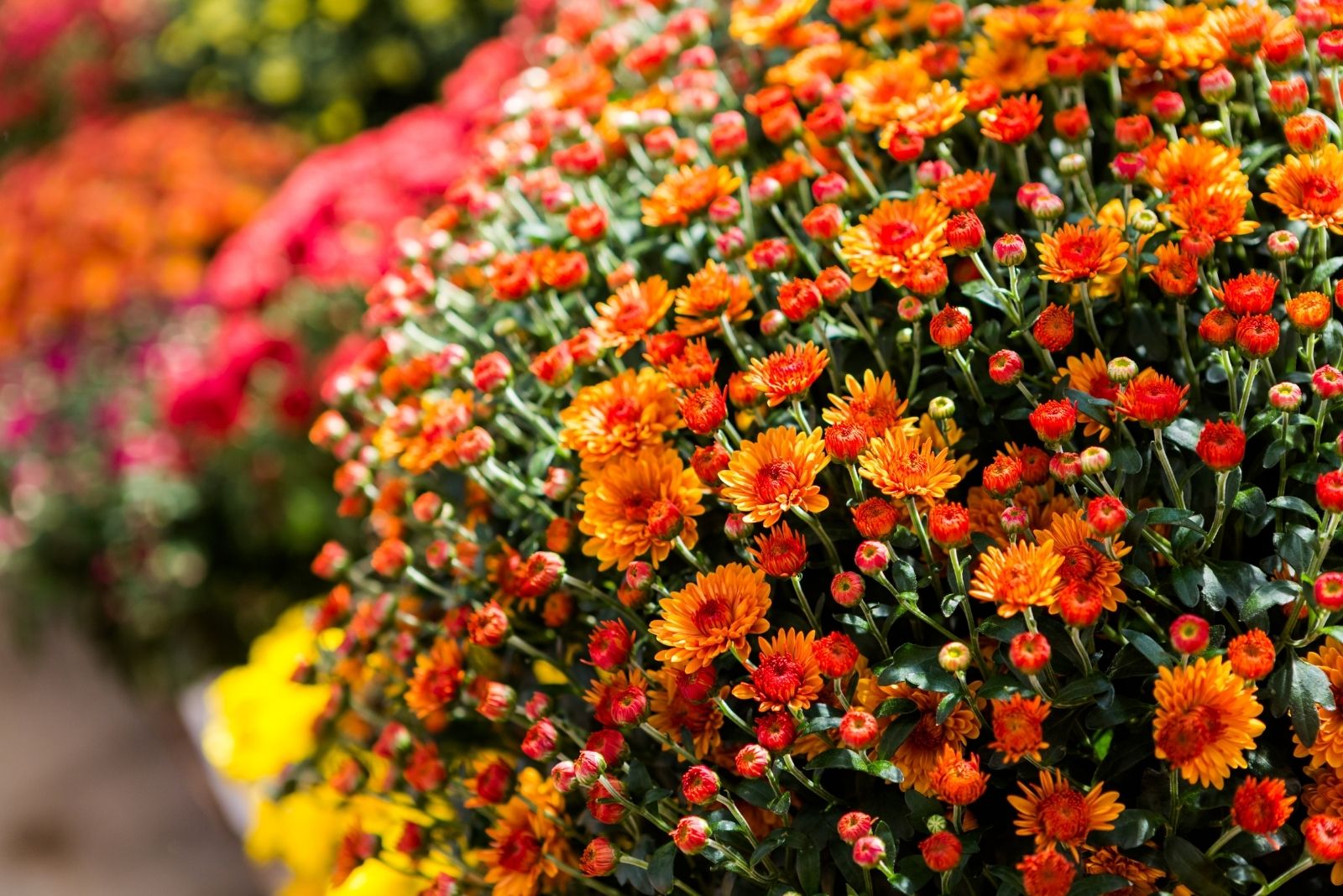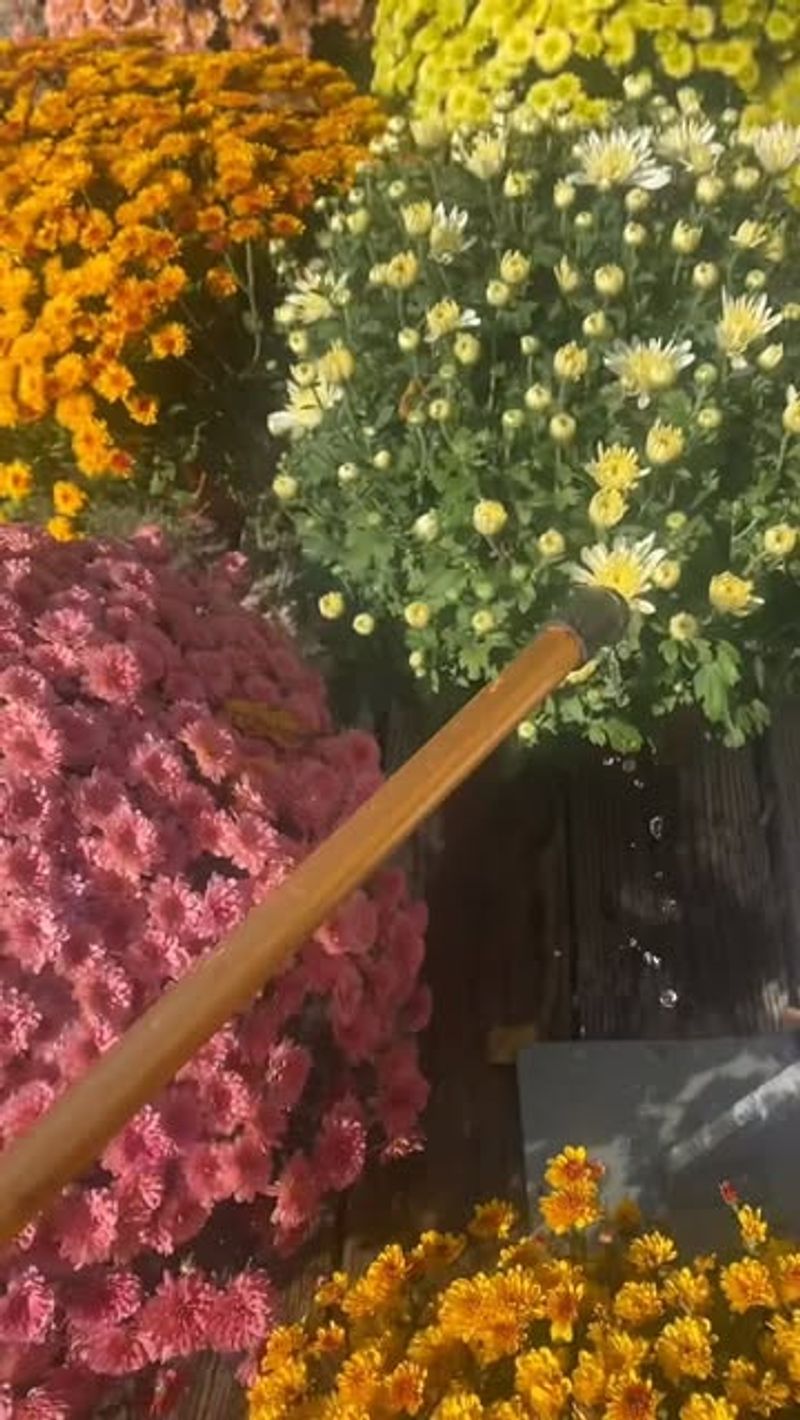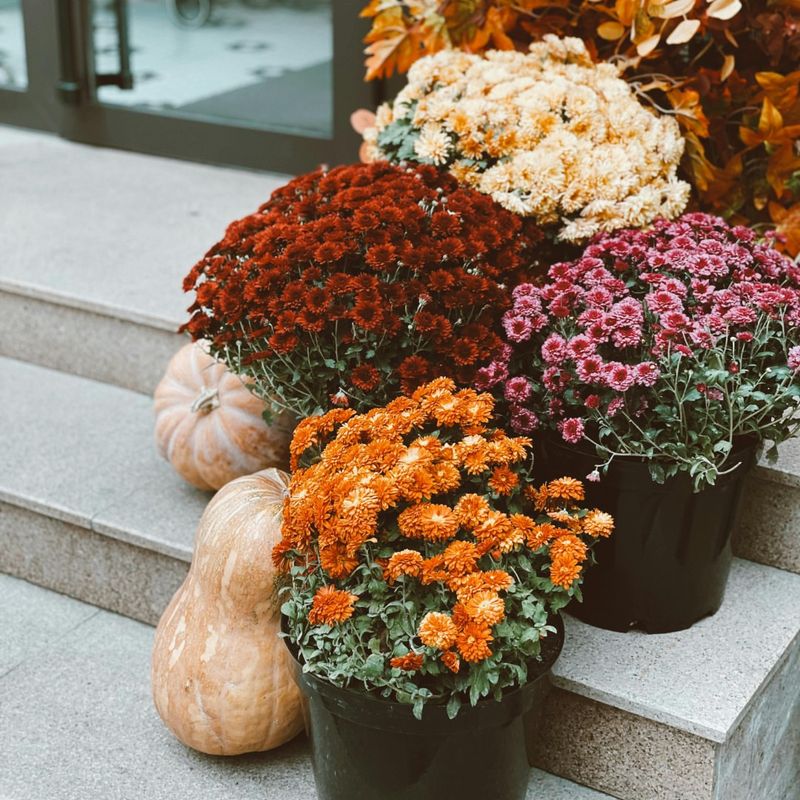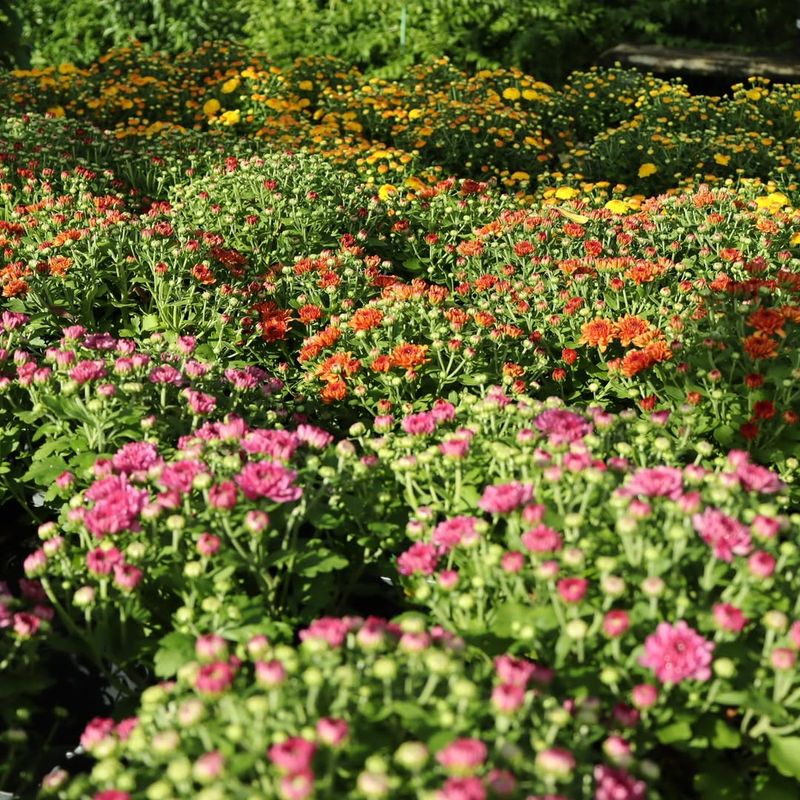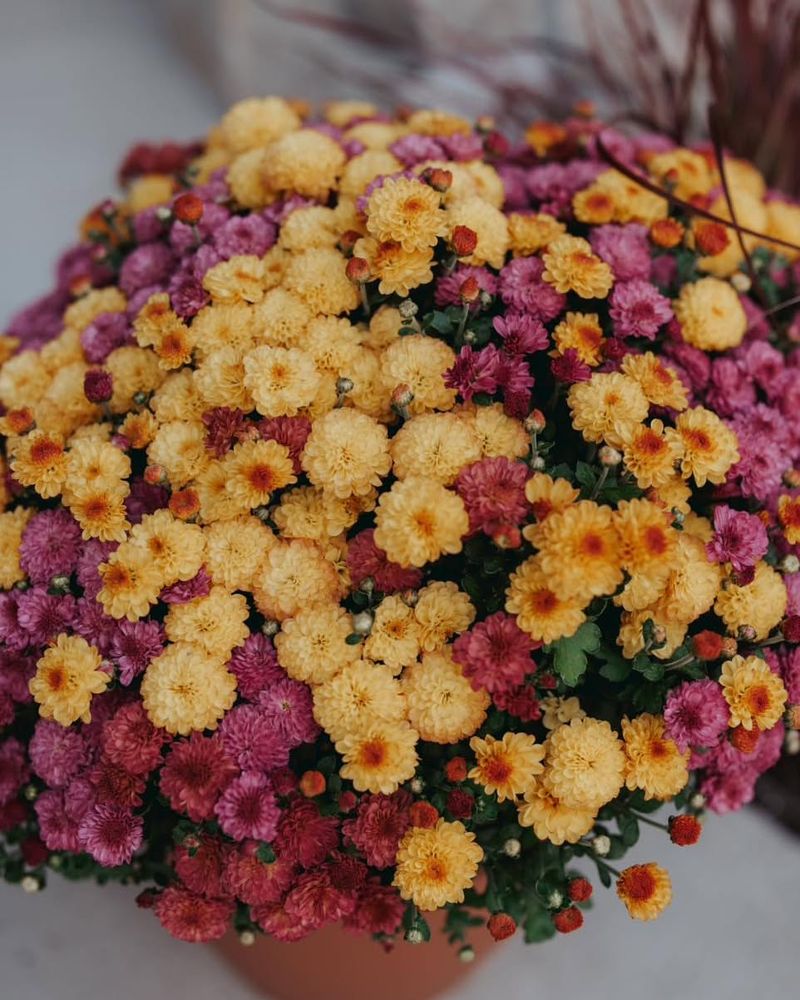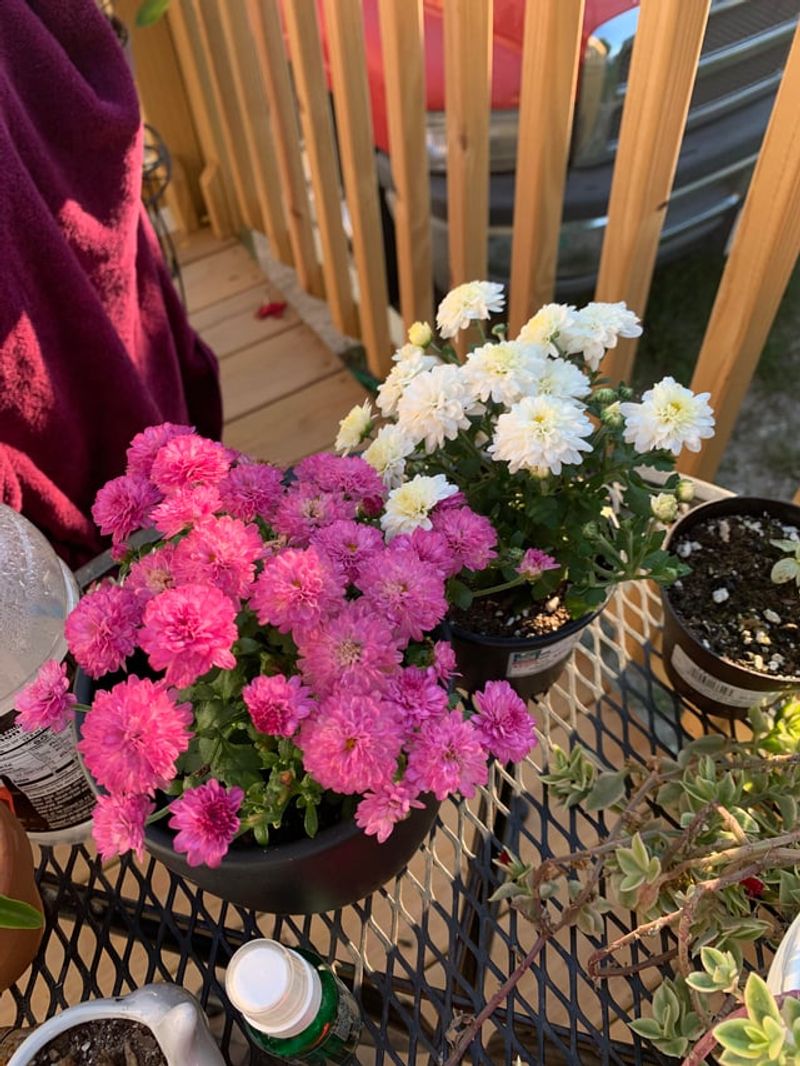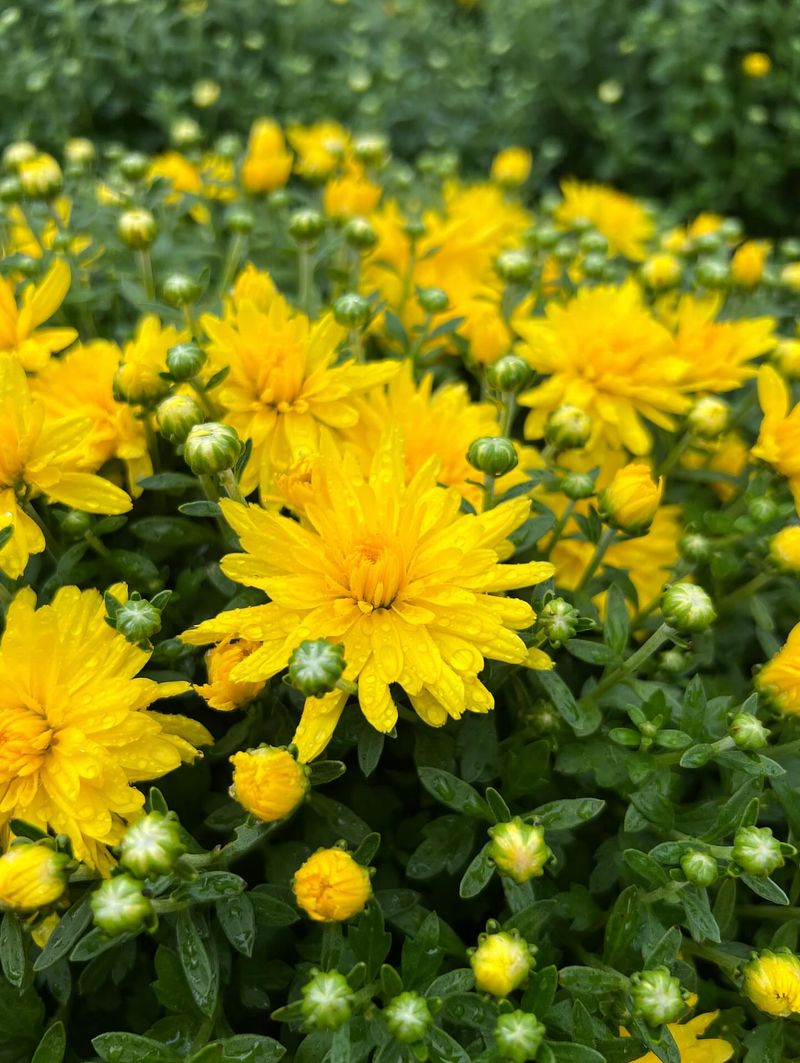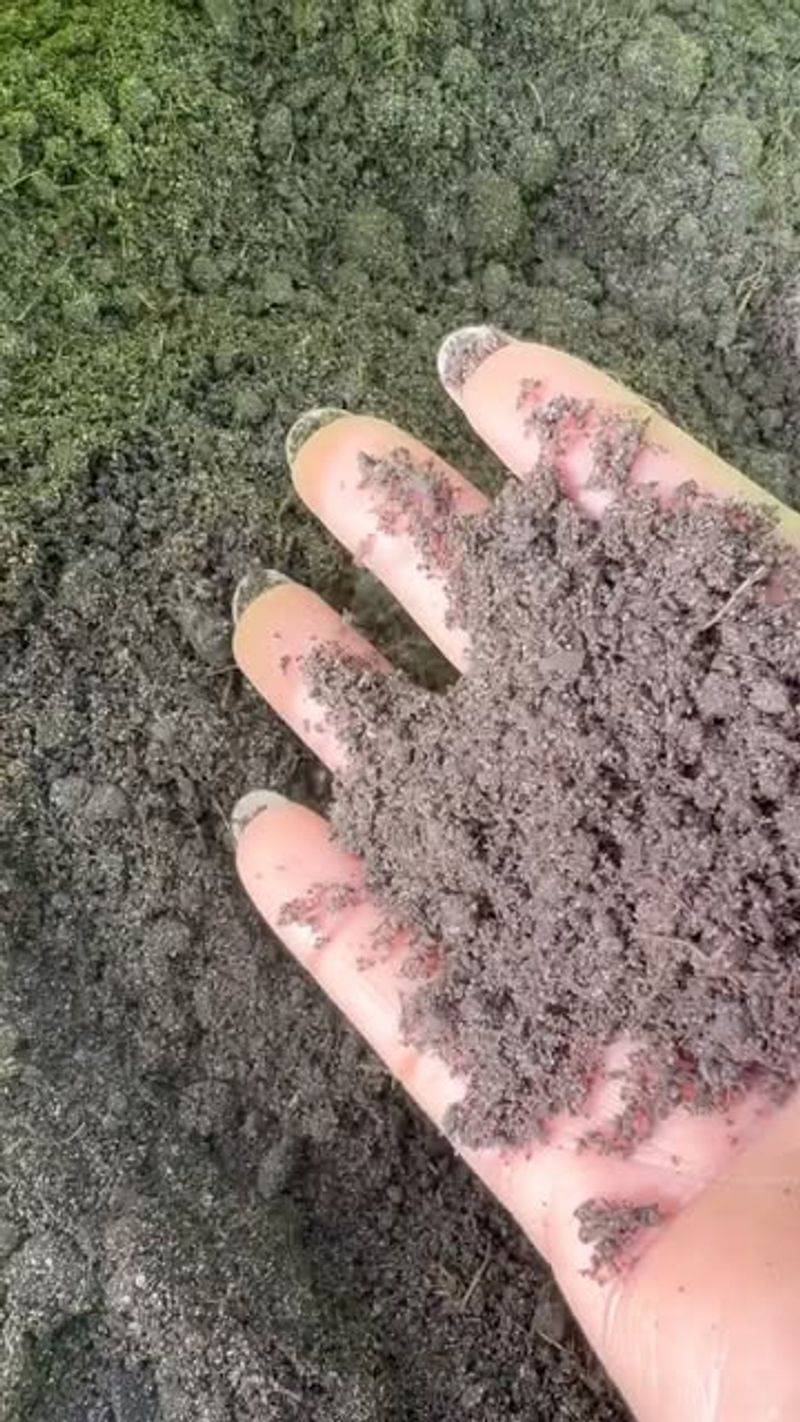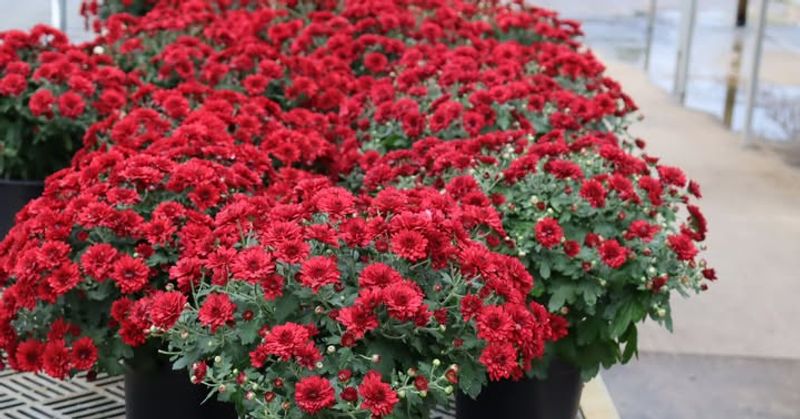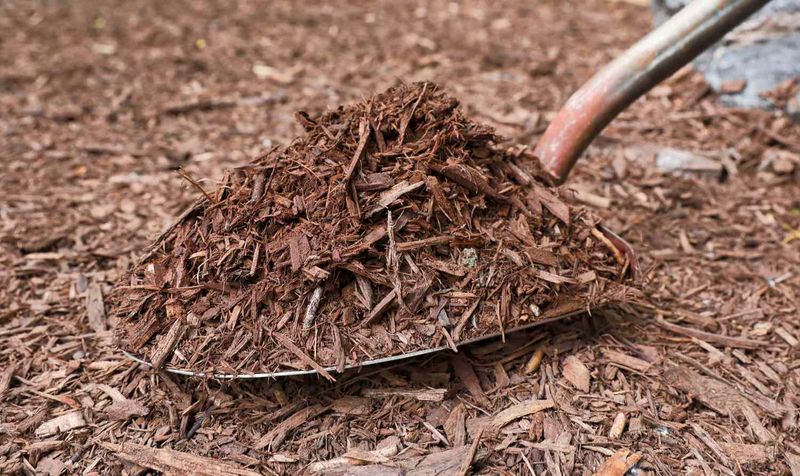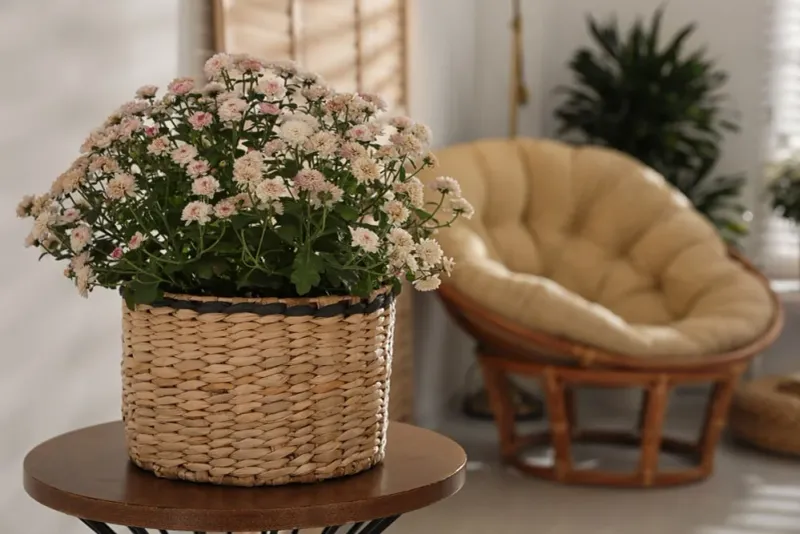For me, nothing says fall in Tennessee quite like a porch full of golden mums. Gardeners across the state love these colorful plants, but keeping them fresh as temperatures shift from warm September days to chilly November nights can be tricky.
With the right care, your mums can stay beautiful through the entire season. These simple tricks will help you enjoy healthy, blooming mums all fall long.
1. Water Deeply But Not Too Often
Proper watering makes all the difference when caring for chrysanthemums during Tennessee’s unpredictable fall weather. Too much water causes root rot, while too little leads to wilting and brown edges.
Check the soil daily by sticking your finger about an inch down. If it feels dry, water deeply at the base until moisture reaches the roots, avoiding the leaves and flowers.
I’ve found that morning watering works best here in Tennessee since it gives plants time to absorb moisture before cooler evenings set in. This simple routine keeps roots healthy without overdoing it.
2. Pick The Right Spot For Sunlight
Chrysanthemums need plenty of light to produce those gorgeous fall blooms we all love. Six hours of direct sunlight each day keeps them flowering strong through October and November.
In Tennessee, positioning your pots on south-facing porches or patios works perfectly. If planted in the ground, choose spots away from large trees that create too much shade during shorter fall days.
I noticed my plants on the east side of my house always bloomed longer than those tucked under the eaves. Sunlight truly powers their performance, especially as days grow shorter.
3. Pinch Off Spent Blooms Regularly
Deadheading sounds fancy, but it just means removing flowers once they start turning brown or wilting. This encourages the plant to put energy into new blooms instead of making seeds.
Use your fingers or small scissors to snip off faded flowers right above the next set of leaves. Do this every few days throughout the season for continuous color.
Tennessee gardeners I know swear by this trick for extending bloom time well into November. It takes just a few minutes but really makes a difference in how long your display lasts.
4. Feed Them With Balanced Fertilizer
Feeding your chrysanthemums gives them the nutrients needed to keep producing flowers through fall’s changing conditions. A balanced fertilizer with equal parts nitrogen, phosphorus, and potassium works best.
Apply liquid fertilizer every two weeks during September and early October. Stop feeding by mid-October since cooler Tennessee temperatures naturally slow growth, and extra nutrients won’t help much then.
I use a half-strength mix to avoid burning the roots, especially with potted plants. This gentle approach keeps mine blooming without stressing them during temperature swings we often see here.
5. Protect From Early Frost Damage
Tennessee’s first frost usually arrives in late October or early November, depending on your location. Frost can damage tender flowers and leaves overnight, cutting your display short.
When temperatures are forecast to drop below 35 degrees, cover your plants with old sheets or frost cloth in the evening. Remove coverings in the morning once temperatures rise above freezing.
I keep lightweight blankets handy on my porch for those surprise cold snaps. This easy step has saved my plants more times than I can count, especially during unpredictable weather patterns.
6. Choose Hardy Varieties For Tennessee
Not all chrysanthemums are created equal when it comes to surviving Tennessee’s climate. Hardy garden mums tolerate temperature changes better than the delicate florist types sold primarily for indoor decoration.
Look for labels saying “garden mums” or “hardy mums” when shopping at local nurseries. These varieties have stronger root systems and handle our humidity and temperature swings much better throughout the season.
I learned this the hard way after buying pretty grocery store mums that barely lasted two weeks. Investing in hardy varieties from garden centers means longer-lasting plants that actually thrive outdoors here.
7. Improve Soil Drainage In Planting Beds
Good drainage prevents root problems that kill chrysanthemums faster than almost anything else. Tennessee’s clay-heavy soil in many areas tends to hold too much water, especially during rainy fall weeks.
Mix compost or pine bark into planting beds before setting out your plants. For containers, use quality potting mix with perlite, and make sure pots have drainage holes at the bottom.
My garden beds improved dramatically after I added a few inches of compost each spring. Now my fall chrysanthemums never sit in soggy soil, even after heavy September rainstorms roll through.
8. Space Plants For Air Circulation
Crowding your chrysanthemums invites problems like powdery mildew and other fungal diseases, especially during humid Tennessee falls. Air circulation helps leaves dry quickly after rain or morning dew.
Space plants at least 18 inches apart in garden beds. For pots, avoid cramming multiple plants into one container unless it’s quite large and allows room for growth.
I used to pack my porch pots tight for a fuller look, but they always developed white patches on the leaves. Giving them breathing room solved that issue completely and kept them healthier longer.
9. Mulch Around The Base Lightly
A thin layer of mulch helps regulate soil temperature and keeps moisture consistent as Tennessee weather bounces between warm days and cool nights. It also prevents soil from splashing onto leaves during rainstorms.
Spread about two inches of shredded bark or pine straw around the base, keeping it a few inches away from stems to prevent rot. Don’t pile it high like a volcano.
This small step made watering easier for me since the soil doesn’t dry out as quickly on sunny days. It also keeps the planting area looking neat throughout the entire season.
10. Bring Potted Plants In During Storms
Heavy rain and strong winds during Tennessee’s fall thunderstorms can batter your potted chrysanthemums, breaking stems and knocking off buds. Moving them temporarily protects your investment and keeps them looking their best.
When storms are forecast, shift pots to a covered porch, garage, or carport. Return them to their sunny spots once the weather clears and conditions settle down again.
I’ve saved countless blooms this way, especially during those intense September storms that blow through Middle Tennessee. It takes just minutes but preserves weeks of beautiful flowers you’ve worked hard to maintain.

